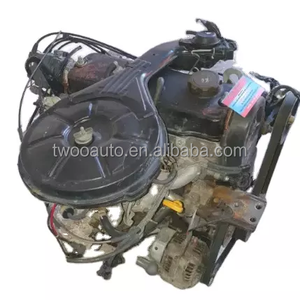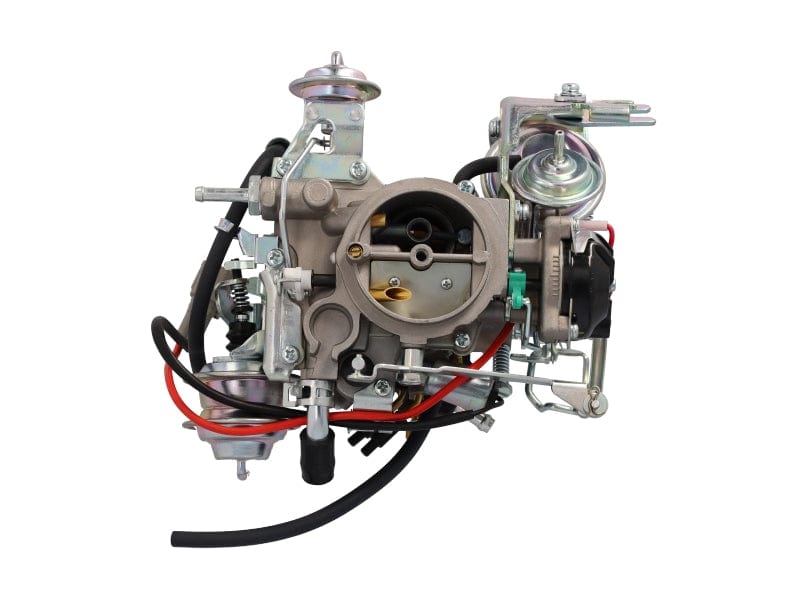Why the Toyota Tazz Remains a Popular Choice for Budget-Conscious Drivers
Why the Toyota Tazz Remains a Popular Choice for Budget-Conscious Drivers
Blog Article
Explore the most recent Trends in Engine Innovation Through Tazz
In the quickly advancing landscape of automobile innovation, Tazz stands at the forefront, highlighting substantial innovations in engine systems that prioritize both technology and sustainability. tazz. From hybrid engines that optimize fuel performance to the introduction of hydrogen gas cells, the fads shaping modern-day powertrains are not only boosting efficiency yet additionally resolving vital environmental challenges. As the sector continues to push limits, it is vital to think about how these growths will affect future transport services and the broader effects for global power intake. What lies ahead in this pivotal transformation?
Hybrid Engine Innovations
Crossbreed engine technologies stand for a critical shift in auto technology, incorporating the benefits of inner combustion engines with electrical propulsion systems. This assimilation not just improves gas efficiency but also minimizes discharges, conference significantly rigorous environmental guidelines. By utilizing both power resources, hybrid engines can maximize performance, supplying power when needed while preserving gas throughout less requiring motoring problems.
Current innovations in crossbreed innovation consist of renovations in battery efficiency and regenerative braking systems. These technologies permit greater power recovery during deceleration, which can be rerouted to assist in velocity or power auxiliary systems. Makers are concentrating on compact layouts and light-weight materials to take full advantage of the effectiveness of hybrid powertrains.
The growth of plug-in crossbreeds has actually additionally increased the market, enabling vehicle drivers to charge their vehicles making use of conventional electric outlets. This function commonly permits considerable all-electric range, further lowering dependence on traditional fuels. tazz. As the automotive sector proceeds to evolve, hybrid engine innovations are anticipated to play an essential duty in bridging the space in between standard cars and totally electrical designs, supplying a transitional option that deals with diverse consumer requirements and choices
Advancements in Electric Powertrains
The automotive landscape is quickly progressing, with electrical powertrains emerging as a leading force in lasting transportation. Advancements in electric automobile (EV) technology are dramatically improving effectiveness, efficiency, and individual experience. Secret technologies include renovations in battery chemistry, which have actually increased power density, reduced billing times, and prolonged overall battery life.
Solid-state batteries, for instance, assure to transform the marketplace by offering greater security and effectiveness contrasted to standard lithium-ion cells. Advancements in regenerative braking systems are enabling vehicles to recoup energy during slowdown, adding to overall effectiveness.
Along with battery technology, electrical motor layouts are becoming extra advanced. Innovations such as integrated motors and advanced thermal management systems are assisting to optimize power shipment and minimize weight, inevitably boosting car dynamics.

Jointly, these developments underscore the dedication to transition towards cleaner, a lot more effective transport services, positioning electric powertrains at the forefront of auto development.
The Rise of Hydrogen Gas Cells
Significantly, hydrogen gas cells are obtaining traction as a sensible alternative to standard internal burning engines and battery electrical vehicles. This modern technology harnesses the chemical energy stored in hydrogen, transforming it into power via an electrochemical find more information response with oxygen. The main by-product of this process is water, making hydrogen fuel cells an environmentally friendly option with absolutely no emissions at the tailpipe.

Automakers are increasingly investing in hydrogen fuel cell technology, acknowledging its possibility for long-range applications and rapid refueling capabilities that rival standard gas. Additionally, fields such as heavy-duty transport and public transit are particularly appropriate for hydrogen gas cells, where battery electric solutions might fall short as a result of weight and variety restrictions.
As study and financial investment proceed to increase, hydrogen gas cells are poised to play a substantial function in the future landscape of clean transport and power services.
Enhancements in Internal Combustion Engines
Technologies in internal burning engine (ICE) technology are changing standard automobiles to fulfill contemporary environmental requirements and efficiency expectations. Among one of the most significant improvements involves the combination of advanced gas shot systems. These systems optimize the air-fuel mixture, improving burning performance and resulting in decreased emissions. Straight fuel shot, for example, enables much better atomization of fuel, resulting in even more full my response combustion and improved power outcome.
In addition, turbocharging has actually acquired importance, permitting smaller engines to deliver greater efficiency without the weight of bigger engines - tazz. This modern technology not only improves effectiveness but likewise adds to reduce fuel intake. Variable valve timing systems are likewise being refined, making it possible for engines to adjust to different driving problems for boosted torque and responsiveness
Additionally, the usage of light-weight materials in engine building and construction is coming to be standard, more boosting gas efficiency by lowering general lorry weight. Engine control systems (ECUs) are significantly innovative, allowing real-time adjustments that maximize performance and exhausts.
These improvements collectively symbolize a pivotal shift in ICE innovation, aligning with worldwide sustainability goals while still providing the performance motorists anticipate from their lorries. As the sector progresses, these renovations proceed to form the future of conventional automobile engineering.
Future Trends in Engine Performance
Significant improvements in engine efficiency are anticipated as manufacturers focus on incorporating sophisticated innovations to meet rigorous environmental regulations and customer demands. The change towards electrification, hybrid systems, and alternative gas is improving the automobile landscape, driving innovations that improve fuel economy and reduce discharges.
Among the key fads is the application of advanced materials and producing techniques. High-strength alloys and light-weight composites add to lowered car weight, therefore improving total efficiency. Furthermore, the fostering of turbocharging and variable shutoff timing innovations allows for boosted power result from smaller sized engines, even more improving gas economy.

Conclusion
In conclusion, the expedition of engine innovation exposes considerable developments that prioritize sustainability and efficiency. Innovations in hybrid engine systems, electric powertrains, and hydrogen gas cells show a commitment to reducing emissions while boosting efficiency. Furthermore, enhancements in interior combustion engines and a concentrate on lightweight products add to total engine efficiency. As the automotive market remains to evolve, these fads will certainly play an important role fit a cleaner and even more sustainable future for transport.
From hybrid engines that optimize fuel effectiveness to the appearance of hydrogen fuel cells, the fads forming modern powertrains are not only improving performance yet also resolving essential environmental obstacles.Crossbreed engine technologies represent a pivotal change in vehicle modern technology, integrating the advantages of inner burning engines with electrical propulsion systems.In addition, turbocharging has gotten prominence, enabling smaller engines to provide greater performance without the weight of larger engines. click for source Furthermore, the fostering of turbocharging and variable valve timing innovations allows for boosted power result from smaller engines, further enhancing fuel economic situation.
Enhancements in internal burning engines and an emphasis on light-weight materials contribute to total engine performance.
Report this page